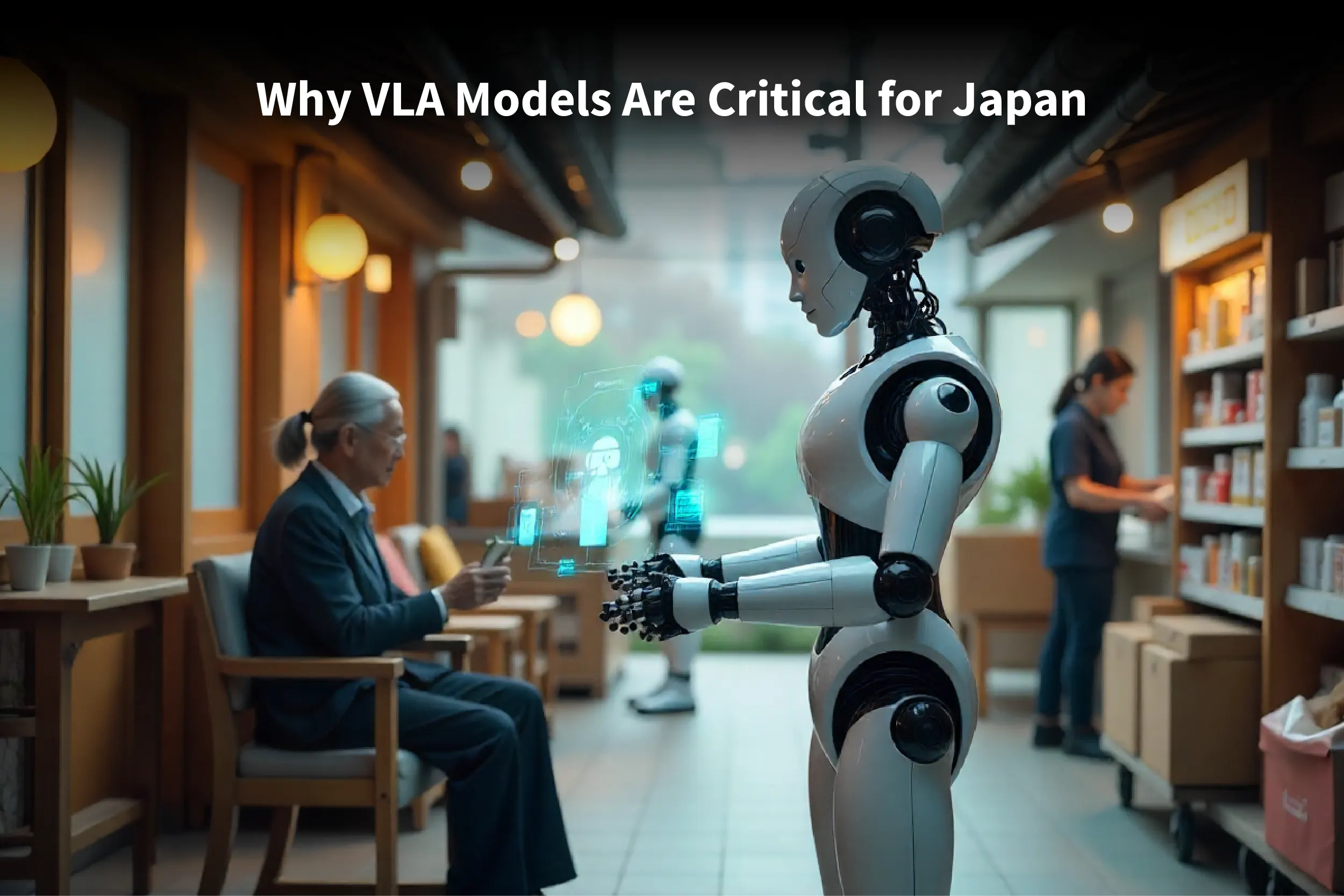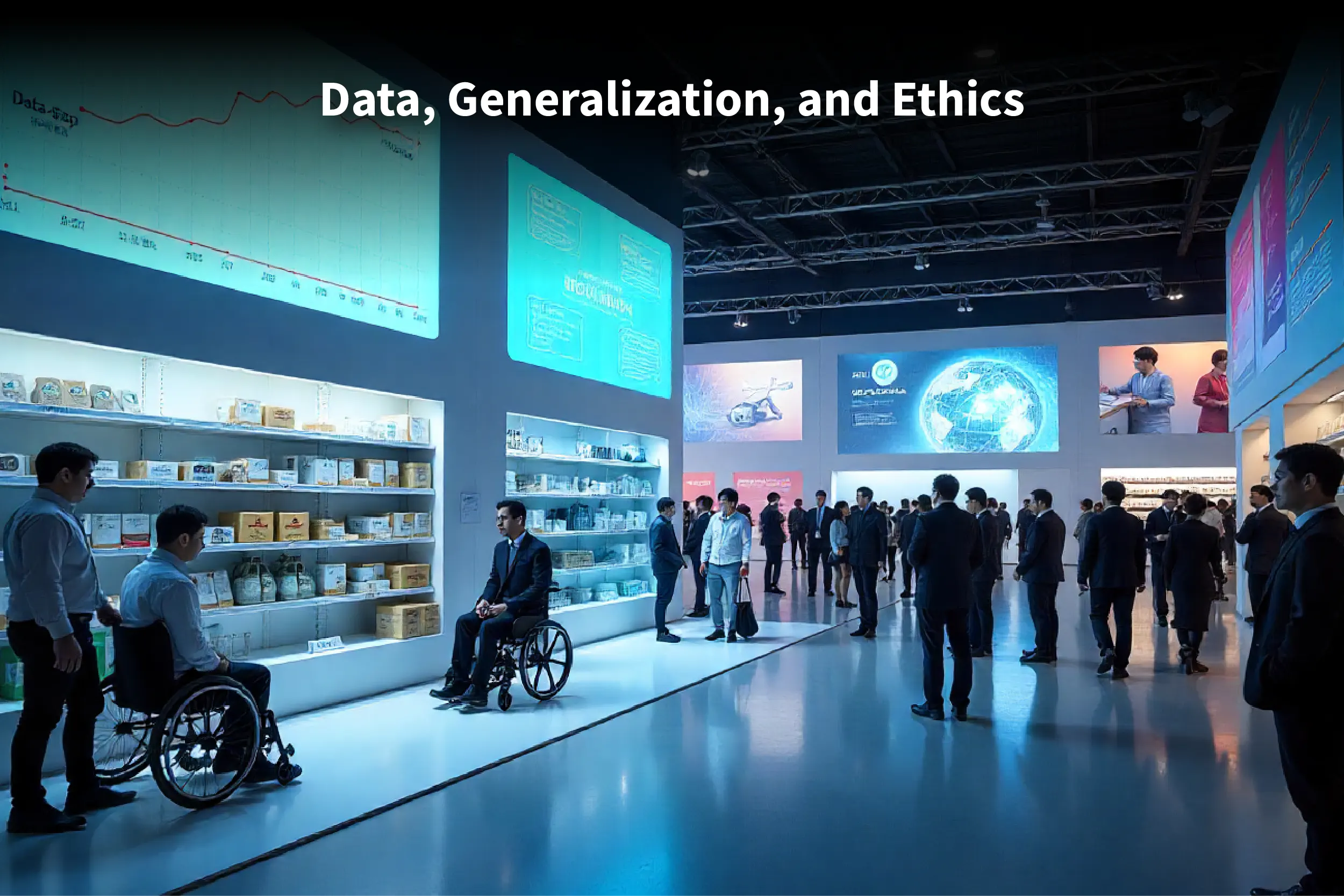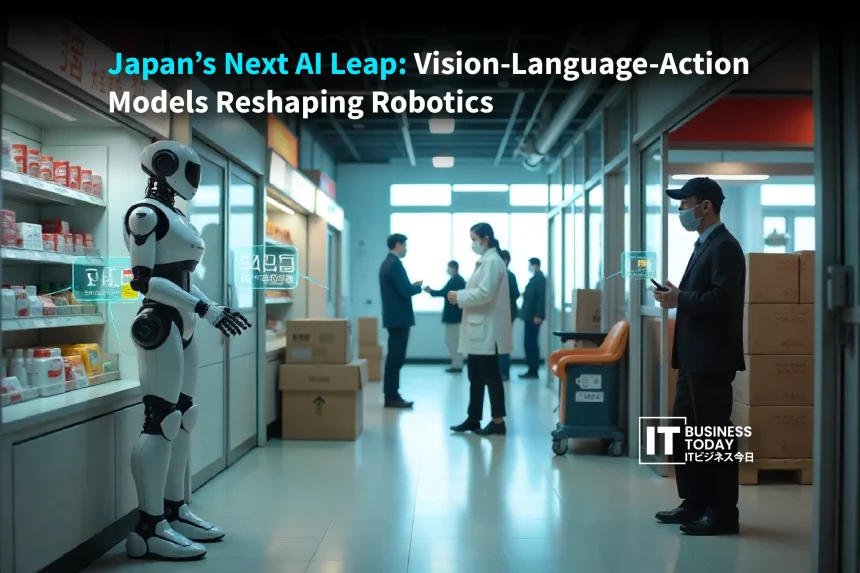Japan has always led in robotics, but the country is facing a challenge that no machine alone has solved yet: a shrinking workforce. Stores, warehouses, and care facilities are falling behind as labor shortages get worse. The Monthly Economic Report from August 2025 shows that gaps in services and logistics are widening, putting Japan’s economic recovery at risk.
Could robots do more than follow instructions? Vision-Language-Action models might hold the answer. Unlike traditional AI that reads or sees, VLAs can perceive their environment, understand language, and act in the physical world. They can move boxes, restock shelves, or assist the elderly while interpreting human commands on the fly.
For Japan, this is more than a technological upgrade. VLAs are a strategic tool to address demographic pressures, maintain productivity, and redefine the way machines interact with the real world. The question is no longer if robots will help, but how quickly they can become true partners.
Also Read: Top Fintech Innovations Transforming Japan’s Banking 2.0 Era
The Architecture of Action
Vision-Language-Action Models are changing how robots move from seeing to doing. In the old way, robots had to follow steps: first look, then plan, and finally act. This worked in factories with predictable setups, but once the environment got messy or instructions changed, robots struggled. VLAs remove these bottlenecks by combining perception, reasoning, and action into a single system that adapts as it goes.
The first piece is the Vision Encoder. It lets the robot interpret visual information, turning what it sees into data it can act on. Then comes Language Grounding. This part reads and understands instructions, making sense of context and intent. When someone says, ‘Pick up the red box,’ the robot knows exactly what to do. The final part, the Action Decoder, converts that understanding into precise motor commands. The result is movement that feels fluid and responsive, not rigid.
The real power of VLAs lies in generalization. Robots do not need every task pre-programmed. They can tackle new situations, respond to unexpected obstacles, and follow abstract instructions intelligently. METI’s February 2025 report confirms that autonomous delivery robots and AI-driven humanoids can now adapt tasks in real environments, combining sight, language, and action seamlessly.
VLAs are turning robots into partners that think and move with purpose.
Why VLA Models Are Critical for Japan

Japan is running out of workers while the demand for essential services keeps rising. Stores, delivery networks, and elder care facilities need hands, but there simply are not enough people. Ordinary automation can only do so much. Machines that follow fixed instructions fail when situations change or environments get messy. This is where Vision-Language-Action models step in. They combine seeing, understanding, and acting into a single flow.
The government has planned for this. METI’s New Robot Strategy set the stage for integrating robots into daily life and industry. VLAs push the idea further. They allow machines to interpret instructions, understand context, and perform tasks without constant human supervision. They do not just follow commands; they adapt and respond.
Economic pressures make this urgent. The Cabinet Office’s Economic White Paper 2025 explains that Japan aims for a growth-oriented economy, supported by wage increases and service-sector recovery. VLAs help sustain operations in sectors facing labor shortages. They cut delays, boost efficiency, and ensure essential services keep running.
The real challenge comes when robots leave the factory and enter unpredictable environments. Industrial machines excel at repetition, but stores, hospitals, and care homes present new problems every day. Vision-Language-Action models give robots the ability to navigate these spaces, handle unexpected tasks, and learn as they go. For Japan, adopting this technology is not a choice. It is the next step in keeping the economy moving and society functioning.
Japan’s VLA Pioneers in Action
Japan has always been ahead in robotics, but Vision-Language-Action models are changing the game. Across retail, logistics, manufacturing, and elder care, Japanese companies are taking research from the lab and putting it to work in the real world.
In retail and logistics, the partnership between Telexistence and Seven-Eleven is showing what’s possible. Their Astra humanoid robot stocks shelves and manages inventory in convenience stores. What makes Astra different is its ability to understand spoken instructions and adapt to store layouts on the fly. It can handle new products, move through crowded aisles, and respond to unexpected obstacles. METI’s February 2025 report confirms that robots like Astra can interpret commands and adjust tasks in real-world conditions. This reduces the need for human labor and keeps stores running even when staffing is short.
Industrial and manufacturing robots are also evolving. Preferred Networks and Toyota are combining AI with advanced sensors to go beyond fixed programming. These machines can adjust on the fly in assembly lines and material handling. Japan’s automotive industry installed about 13,000 industrial robots in 2024, an 11% increase from the previous year, according to the IFR World Robotics 2025 report. The country is scaling advanced robotics while keeping production precise and efficient.
Elder care is another area where VLAs can make a real difference. Care robots used to focus on lifting or guiding patients. VLAs take this further. They can act as cognitive assistants, understand spoken instructions, monitor health, and respond to individual needs. This makes care more personal, flexible, and able to cover gaps caused by labor shortages and an aging population.
Adaptability is the key across all sectors. VLAs let robots operate in unpredictable, human-centered environments. They learn, adjust, and act on the go. These machines are no longer rigid industrial tools. They can see, understand, and act independently. Japan’s work proves this is not theory and it is happening right now.
Japanese companies are showing what robots can really do when vision, language, and action come together. They can stock shelves, assemble cars, and even assist the elderly. VLAs turn machines into smart partners that think and act, not just follow orders. The impact is real, tangible, and a strong signal that Japan is leading the next wave of robotics.
Data, Generalization, and Ethics

VLAs are impressive, but they are not magic. Data is the first hurdle. Japan is collecting more robot and industrial data, but these models need huge amounts of real-world action data. Watching robots move, pick, and interact in thousands of scenarios takes time and effort. You cannot just grab this from the internet.
The sim-to-real gap is another problem. Robots trained in simulations often fail in the real world. Shelves are messy, humans do unpredictable things, and environments change constantly. A robot that works perfectly in a lab can struggle in a store, factory, or care home.
Running these models is expensive. Big VLAs need massive computing power to act in real time. That slows down deployment and adds costs.
Then there is trust. Giving robots control over safety-critical tasks raises hard questions. How much should they decide on their own when people depend on them for care or safety?
iREX 2025, happening December 3–6 at Tokyo Big Sight, shows the progress and the limits. The latest robots are on display. They prove what is possible, while reminding us that real-world challenges are still huge.
The Next Phase of Japan’s Robot Strategy
Japan is taking the next big step in robotics. Vision-Language-Action models are closing the gap between digital intelligence and the physical world. Robots are no longer just pre-programmed machines. They can see, understand, and act, making them adaptable partners instead of tools.
The implications go beyond stores. Service robots in factories, warehouses, and care facilities can now work more independently. Japan is moving from theory to practice, turning foundation-model-powered robots into everyday partners. The lesson is clear. Adaptable, intelligent machines are no longer a future concept. They are the new reality, and Japan is leading the way.







